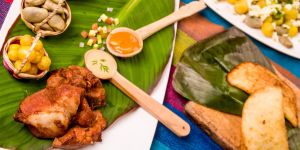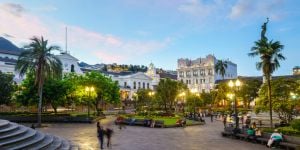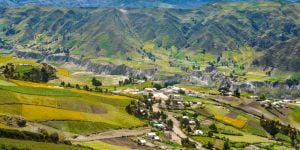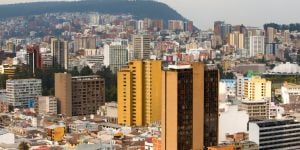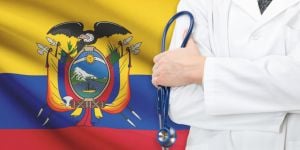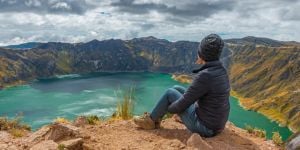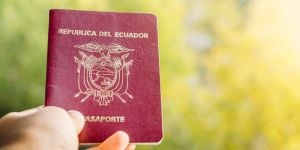This article paints a brief picture of Ecuador, a small but complex and diverse Andean country. Although a small country in size, Ecuador boasts a great deal of variety: geographically, politically, culturally, politically, and economically.
Picture Ecuador
Ecuador is located in northwestern South America, situated between coastal neighbors Colombia to the north and Peru to the south. The Andes mountain range runs north/south through Ecuador and bisects the coastal areas that open out onto the Pacific Ocean, the Amazon basin rainforest, and jungle areas that lie to the east of the Andes. The equator runs across the middle of the country, giving Ecuador its name. The Galápagos Islands, granted world heritage status by UNESCO for their unique fauna and flora, are also part of Ecuador and lie about 600 miles off the Pacific coast.
Past history
First populated by various indigenous tribes, much of Ecuador's land was absorbed by the Inca Empire in 1463, and was considered a summer home by some of the Incan rulers. While a few indigenous tribes were never conquered by the Incas and retained their independence from them, the start of the 16th century saw Ecuador's discovery and subsequent conquest by the Spanish colonial empire. Ecuador was briefly part of what was originally known as Gran Colombia, including land now in Colombia. In 1830, Ecuador gained its own independence and has since been ruled by a succession of military and political groups.
Present politics
Previously, instability, fueled by economic, ethnic, and regional factors, were a longtime reality in Ecuador. While it is a representative democracy, no less than seven presidents came and went between 1996 and 2006. However, recent political and economic changes have generated stronger and more stable economics and quality of life for citizens and residents. In February 2013, leftist Rafael Correa was re-elected as president for a third time and by a wide margin. Correa's administrative terms brought huge gains to social programs for the poor and elderly, and also in infrastructures including healthcare, education, and roads.
¡Hola Ecuadorians!
Over time, pre-Hispanic indigenous populations such as the many indigenous peoples and the sub-Saharan Africans who arrived as slave labour, mingled with European peoples to form new ethnic groups. Mestizos, melded from European and Amerindian ancestry, are the largest grouping (71.9% of the population). While the main language in Ecuador is Spanish, the indigenous language, Quechua (or Kichwa) is generating new popularity. The dominant religion is Roman Catholicism but Jehovah's Witnesses and Mormons are gaining many followers. Life is centred around the family, and Ecuadorians uphold a warm and friendly reputation towards foreign visitors and residents.
Currency
Dollarization to US currency in 2000 stabilized the economy after a monetary inflation crisis in 1999. Since that time, the currency is tied to the US dollar, and inflation has since been consistently low. While manufacturing is targeted mainly around the domestic market, exports of oil, shrimp, bananas, cacao & especially roses, have vastly increased in recent years and have fueled Ecuador's development. While the cost of living is indeed relatively low, certain imported items (such as cars and alcohol) can be expensive. While standards of living have improved greatly since 2000, around one quarter of the population still lives below the poverty line.
Useful link:
We do our best to provide accurate and up to date information. However, if you have noticed any inaccuracies in this article, please let us know in the comments section below.
